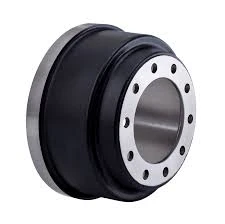
-
 Afrikaans
Afrikaans -
 Albanian
Albanian -
 Amharic
Amharic -
 Arabic
Arabic -
 Armenian
Armenian -
 Azerbaijani
Azerbaijani -
 Basque
Basque -
 Belarusian
Belarusian -
 Bengali
Bengali -
 Bosnian
Bosnian -
 Bulgarian
Bulgarian -
 Catalan
Catalan -
 Cebuano
Cebuano -
 Corsican
Corsican -
 Croatian
Croatian -
 Czech
Czech -
 Danish
Danish -
 Dutch
Dutch -
 English
English -
 Esperanto
Esperanto -
 Estonian
Estonian -
 Finnish
Finnish -
 French
French -
 Frisian
Frisian -
 Galician
Galician -
 Georgian
Georgian -
 German
German -
 Greek
Greek -
 Gujarati
Gujarati -
 Haitian Creole
Haitian Creole -
 hausa
hausa -
 hawaiian
hawaiian -
 Hebrew
Hebrew -
 Hindi
Hindi -
 Miao
Miao -
 Hungarian
Hungarian -
 Icelandic
Icelandic -
 igbo
igbo -
 Indonesian
Indonesian -
 irish
irish -
 Italian
Italian -
 Japanese
Japanese -
 Javanese
Javanese -
 Kannada
Kannada -
 kazakh
kazakh -
 Khmer
Khmer -
 Rwandese
Rwandese -
 Korean
Korean -
 Kurdish
Kurdish -
 Kyrgyz
Kyrgyz -
 Lao
Lao -
 Latin
Latin -
 Latvian
Latvian -
 Lithuanian
Lithuanian -
 Luxembourgish
Luxembourgish -
 Macedonian
Macedonian -
 Malgashi
Malgashi -
 Malay
Malay -
 Malayalam
Malayalam -
 Maltese
Maltese -
 Maori
Maori -
 Marathi
Marathi -
 Mongolian
Mongolian -
 Myanmar
Myanmar -
 Nepali
Nepali -
 Norwegian
Norwegian -
 Norwegian
Norwegian -
 Occitan
Occitan -
 Pashto
Pashto -
 Persian
Persian -
 Polish
Polish -
 Portuguese
Portuguese -
 Punjabi
Punjabi -
 Romanian
Romanian -
 Russian
Russian -
 Samoan
Samoan -
 Scottish Gaelic
Scottish Gaelic -
 Serbian
Serbian -
 Sesotho
Sesotho -
 Shona
Shona -
 Sindhi
Sindhi -
 Sinhala
Sinhala -
 Slovak
Slovak -
 Slovenian
Slovenian -
 Somali
Somali -
 Spanish
Spanish -
 Sundanese
Sundanese -
 Swahili
Swahili -
 Swedish
Swedish -
 Tagalog
Tagalog -
 Tajik
Tajik -
 Tamil
Tamil -
 Tatar
Tatar -
 Telugu
Telugu -
 Thai
Thai -
 Turkish
Turkish -
 Turkmen
Turkmen -
 Ukrainian
Ukrainian -
 Urdu
Urdu -
 Uighur
Uighur -
 Uzbek
Uzbek -
 Vietnamese
Vietnamese -
 Welsh
Welsh -
 Bantu
Bantu -
 Yiddish
Yiddish -
 Yoruba
Yoruba -
 Zulu
Zulu
drum brake spring diagram
Understanding Drum Brake Spring Diagrams A Comprehensive Guide
Drum brakes are a crucial component of many vehicles, providing the necessary stopping power through a mechanical system that uses friction. One of the less discussed but equally important aspects of drum brakes is the spring system. The springs in drum brakes play pivotal roles in their operation, including ensuring the brake shoes return to their original position after being engaged and maintaining the proper tension within the brake assembly. To understand these components better, let's delve into the anatomy of a drum brake spring diagram.
Anatomy of the Drum Brake System
A typical drum brake system consists of several key components the drum, brake shoes, a wheel cylinder, and springs. The drum itself is a cylindrical component that rotates with the wheel. When the brake pedal is pressed, hydraulic pressure from the brake fluid pushes the wheel cylinder, which forces the brake shoes outward against the inner surface of the drum, creating friction that slows down the vehicle.
The Role of Springs in Drum Brakes
Springs in a drum brake system serve multiple functions
1. Returning the Brake Shoes After the driver releases the brake pedal, the springs provide a retracting force that pulls the brake shoes back to their resting position away from the drum. This is crucial to prevent the shoes from dragging against the drum, which can lead to premature wear and reduced fuel efficiency.
2. Maintaining Shoe Tension Springs also help maintain the necessary tension on the brake shoes while they are in contact with the drum. This tension is vital for effective braking performance and for ensuring that the shoes do not move excessively, which could cause them to become misaligned or inefficient.
3. Compensating for Wear Over time, brake shoes will wear down, but springs help to maintain proper spacing between the shoes and the drum, compensating for this wear. This ensures consistent brake performance throughout the service life of the brake shoes.
drum brake spring diagram

Understanding the Drum Brake Spring Diagram
A drum brake spring diagram visually represents the arrangement and interaction of the springs within the drum brake assembly. Typically, the diagram will illustrate the following
- Types of Springs Various types of springs, including return springs and adjuster springs, are depicted. Return springs are often shown positioned at the top of the brake shoes, whereas adjuster springs may be located at the bottom or along the sides.
- Spring Tension The diagram may indicate the tension required for each spring to function correctly. Proper tension is crucial for effective brake operation and safety.
- Attachment Points It also includes details on where each spring connects to the brake shoes and the backing plate. Understanding these connections is essential for anyone looking to repair or replace drum brakes.
- Movement Arrows Some diagrams illustrate the intended movement of the brake shoes and the springs when the brake is applied and released. This can aid in troubleshooting issues when the system does not operate as expected.
Conclusion
Understanding the drum brake spring diagram is pivotal for anyone involved in the maintenance or repair of drum brake systems. By grasping the roles played by each component, particularly the springs, mechanics and vehicle owners can ensure that their braking systems function safely and efficiently. Whether you're diagnosing a problem or simply aiming to enhance your knowledge of automotive systems, familiarizing yourself with these diagrams and their functions can provide invaluable insight into the world of drum brakes. Proper maintenance, including regular inspections of the springs, can prolong the life of the braking system, ensuring a safer driving experience.
-
Rear Drum Brakes Maintenance TipsNewsAug.04,2025
-
Key Components Affecting Brake Drum FunctionNewsAug.04,2025
-
Important Inspection for Truck Drum BrakeNewsAug.04,2025
-
How to Prepare for Changing Rear Drum BrakesNewsAug.04,2025
-
Essential Tools for Cleaning Drum Brakes ProperlyNewsAug.04,2025
-
Brake Drum Function GuideNewsAug.04,2025
-
Safety Features of Red Brake DrumsNewsAug.01,2025
